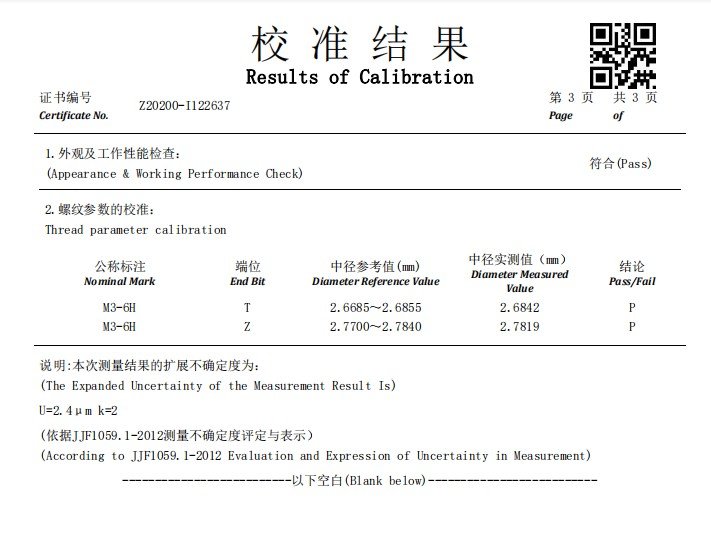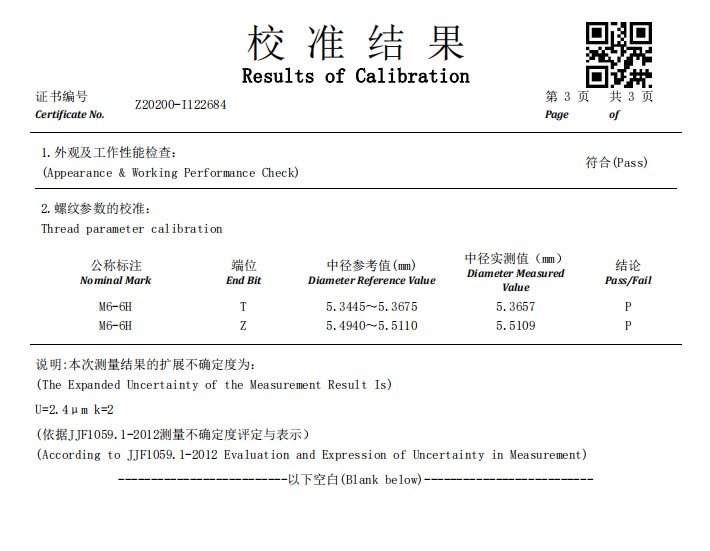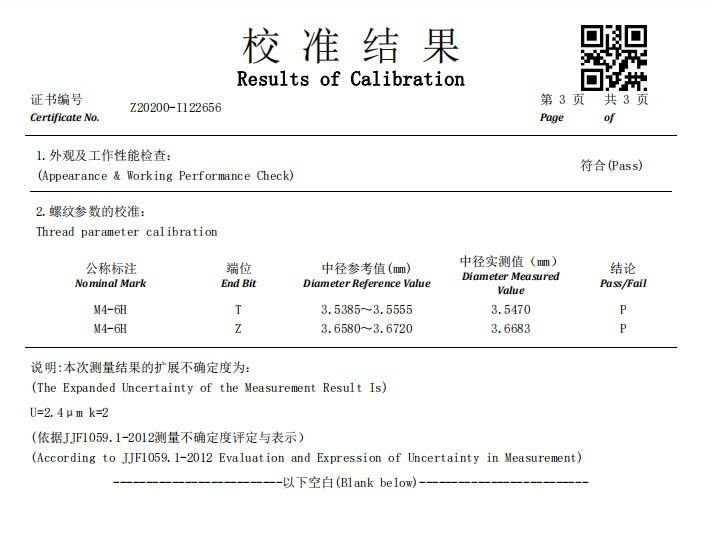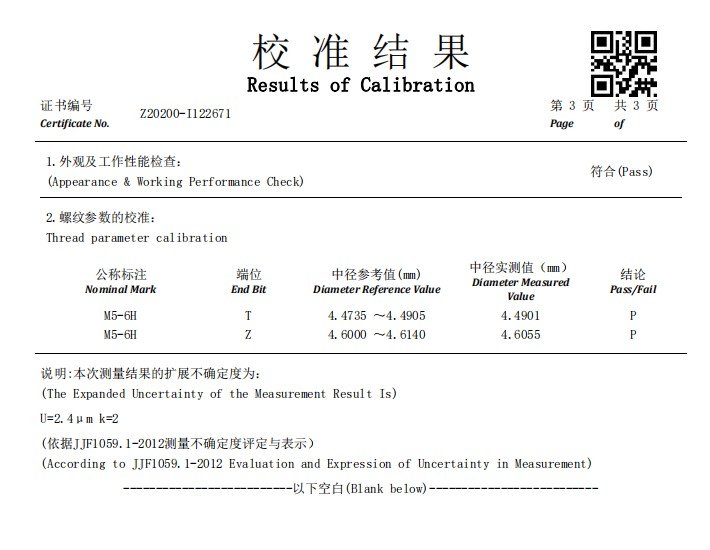Quality Control Department
Quality Control in CNC machining
In order to produce high-quality parts, CNC machining operations must have a well-defined quality control plan in place. This plan should include procedures for inspecting parts as they are machined, and for verifying that the final product meets all requirements. In addition, personnel responsible for quality control must be properly trained in their duties.
What is Quality Control
Quality control in CNC machining is the process of ensuring that parts are made to specifications, using techniques such as inspecting raw materials, verifying machine setup, and monitoring cutting forces and speeds. Any discrepancies or problems should be noted immediately and corrective action is taken.
Importance of Quality Control in CNC machining
Quality control in CNC machining is vital to ensure that parts are produced accurately and consistently according to customer requirements. Quality control helps reduce waste and rework, as well as increase customer satisfaction. It also helps to prevent costly errors from entering the production process.
Also, the quality problem will do badly to a company‘s reputation, and lead to customer complaints and the loss of contracts. This makes quality control in CNC machining an essential part of any manufacturing operation.
How to do Quality Control Effectively for CNC Machining?
–Learn about the industry background: Before doing quality control for CNC machining, the QC members responsible should study the relevant industry background and acquire enough knowledge about related technology. For example, military and aerospace parts generally should come in outstanding CNC precision, absolutely excellent quality, safety, and tight tolerance, and maybe need to withstand extreme conditions.
–Inspecting raw materials: Inspecting raw materials is also one of the key points for quality control. Make sure that all the components such as alloy, steel, etc. meet the requirements before starting production. Generally speaking, we will ask for material certificates from the supplier when purchasing or do it from a Material Analyzer. What’s more, for those commonly used materials like brass or copper, we can easily tell the Authenticity from the processing properties with our decades of machining experience. If necessary, we’ll ship the materials to a third-party testing center for material Identification, like SGS or some other Authority parties.
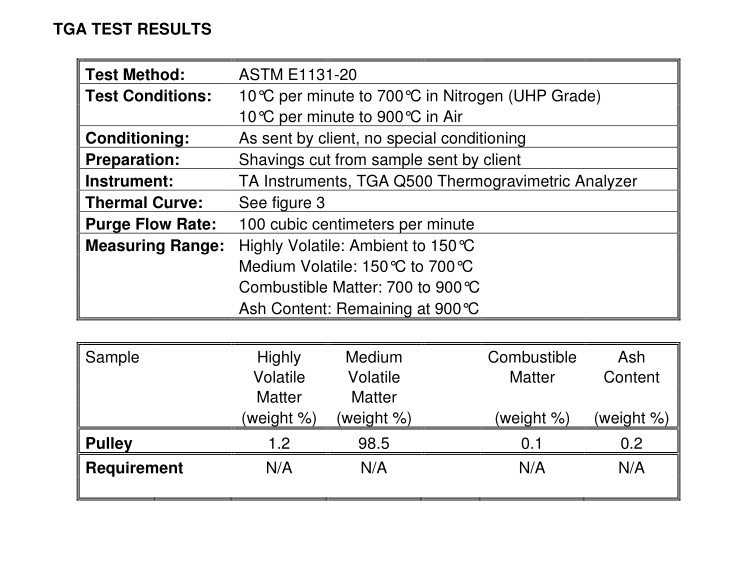

–Communicate with customers: Before machining, we should learn more about the product details and its function. It is necessary for us to decide which material and production technology should be used. Besides, our experienced engineers can give some suggestions on your designs, about how to meet the function while keeping the designs simpler to reduce cost.
Also, it’s important to get an understanding of the customer’s requirements on surface finishes after they receive the goods. For example, if they need to do painting or powder coating from our machined parts, it’s not necessary to make a high-quality finish, or even we can make the parts from some profiles instead of solid blocks, which can greatly reduce their purchasing cost.
–Process Inspection: During production, process inspections will be carried out to ensure that the machining is being done according to specs. This includes checking the cutting forces and speeds, tool paths, machine setup parameters, and other critical machining processes. Any discrepancies should be noted immediately and corrected before proceeding.

–First Article Inspection: Before full production starts, we will always provide an FAI report which means that a first article inspection should be conducted as soon as the samples finish. This includes a thorough visual and dimensional inspection of the parts to ensure accuracy and adherence to the customer’s requirements. If any discrepancies are found, they should be addressed and corrected.
–Final quality inspection: All CNC finished products should undergo final QC inspection. This inspection should include checking the parts against customer drawings and specifications, inspecting for any surface blemishes, ensuring proper fitment, testing the functionality of the parts, and performing any other tests that may be required. All QC reports should be documented and kept for future reference.
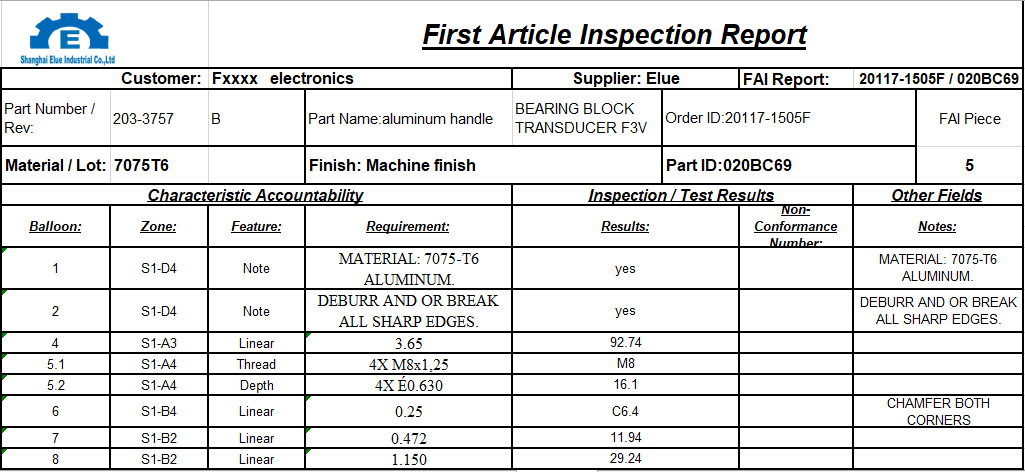

Quality control is essential for CNC machining to ensure that parts are made consistently and accurately. It involves inspecting the raw materials, verifying machine setup, monitoring cutting forces and speeds, and inspecting the finished part. A quality assurance plan should be put in place to ensure that all procedures are followed correctly, and all inspections are properly documented. With these measures in place, CNC machining can help produce high-quality parts that meet design specifications.
Common Quality Control Techniques used for CNC Machined Parts
Common quality control techniques used for CNC machined parts include visual inspection, dimensional measurement, and testing.
Visual inspection is the simplest method of quality control which can be done by naked eyes directly without any special tools, it involves examining the parts for any flaws or inconsistencies, like the surface finish (bumps, bruises, defects), chamfer, and threading.
Dimensional measurements are taken to ensure that the parts meet the required dimensional tolerances, which include dimensional accuracy, shape accuracy, and position accuracy, which can be done from various inspection tools like pin gage, thread gage, go/no-go gage, caliper, depth gage, CMM, projector, diameter micrometer, etc.
While testing includes hardness testing, stress testing, roughness testing, and metallurgical testing. Other quality control techniques include statistical process control, which uses data from past production runs to predict future results.

Quality Inspection Procedures
A quality control plan should include procedures for inspecting parts as they are machined, and for verifying that the final product meets all requirements. It means that quality control measures should be taken at each stage of the CNC machining process, to ensure that the parts are being made according to specifications.
This includes inspecting the raw materials used, ensuring the machine setup is correct, and monitoring the cutting forces, speeds, and feeds during operation. At the end of the machining process, parts must be inspected for accuracy and surface finish. Any discrepancies or problems should be noted immediately and corrective action is taken.
In addition, personnel responsible for quality control must be properly trained in their duties. This training should include an understanding of the machinery and processes involved, as well as an in-depth knowledge of quality control procedures. Quality assurance inspections should be performed regularly to ensure that the procedures are being followed correctly.
Finally, a final visual inspection should be performed to check for any blemishes or other defects. Overall, any out-of-spec parts should not be accepted, and all dimensions must be verified to ensure that they meet the requirements.
Below are some more exact procedures to be followed:
• Inspect raw materials for accuracy and defects before machining begins
• Verify machine setup before each production run
• Monitor cutting forces and speeds during machining to ensure parts are being produced to specifications
• Inspect parts as they are machined from a variety of inspection tools as I showed in Dimensional measurements above.
• Perform a final inspection of the finished part to verify that it meets all specified requirements
• Document any discrepancies or defects found during the inspection process
• Take corrective action to address any problems that are found
These procedures help ensure that parts are produced consistently and accurately, resulting in high-quality parts.

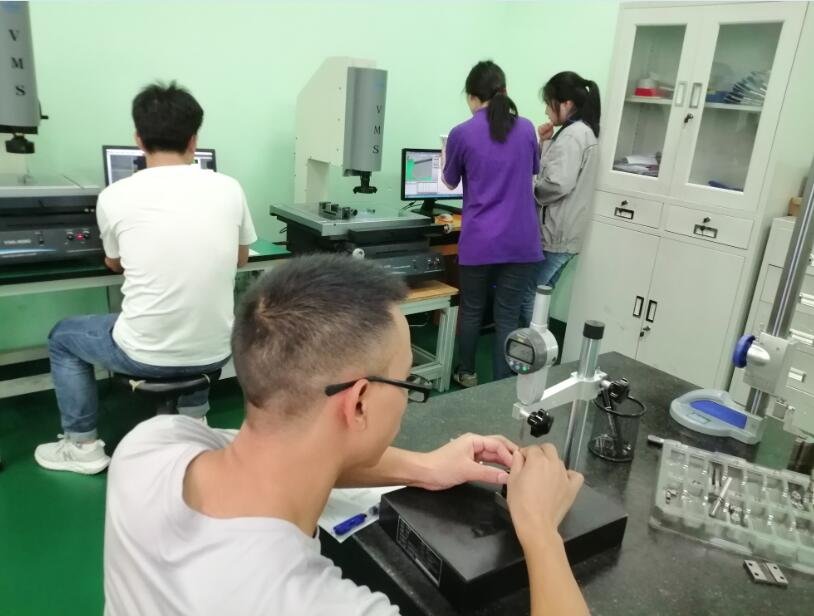
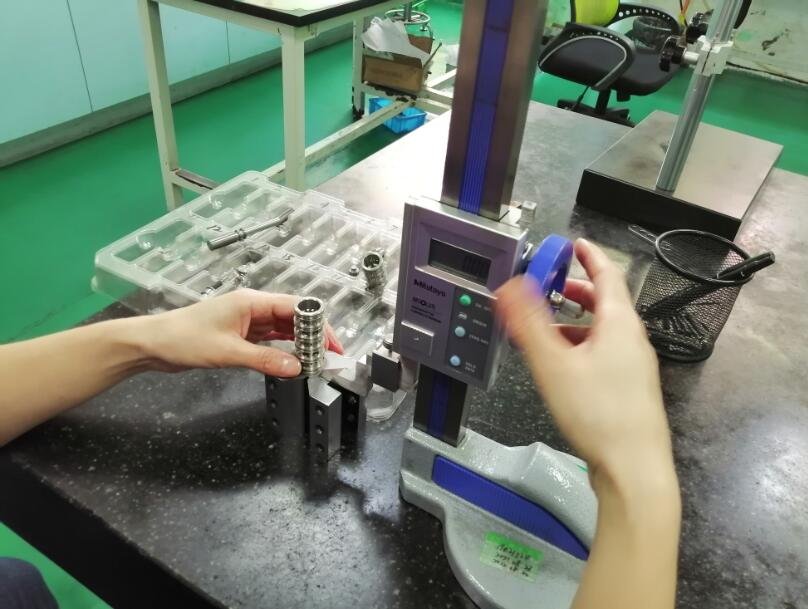
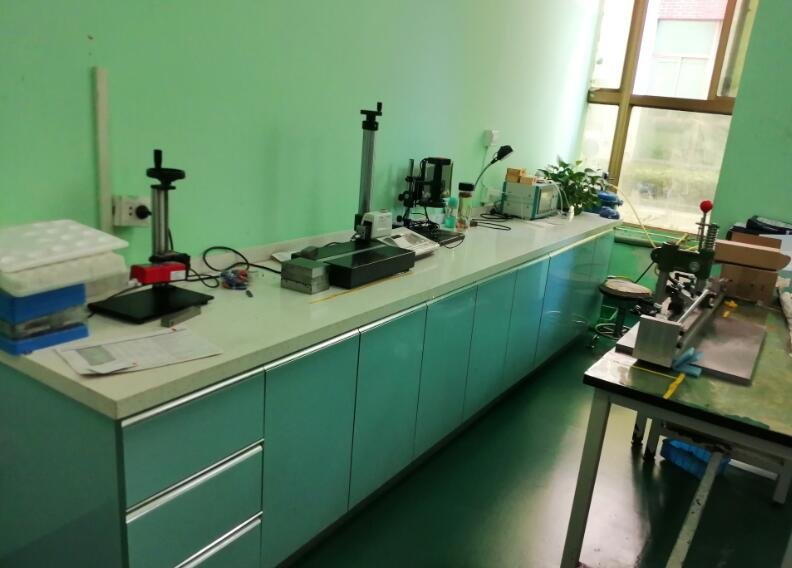
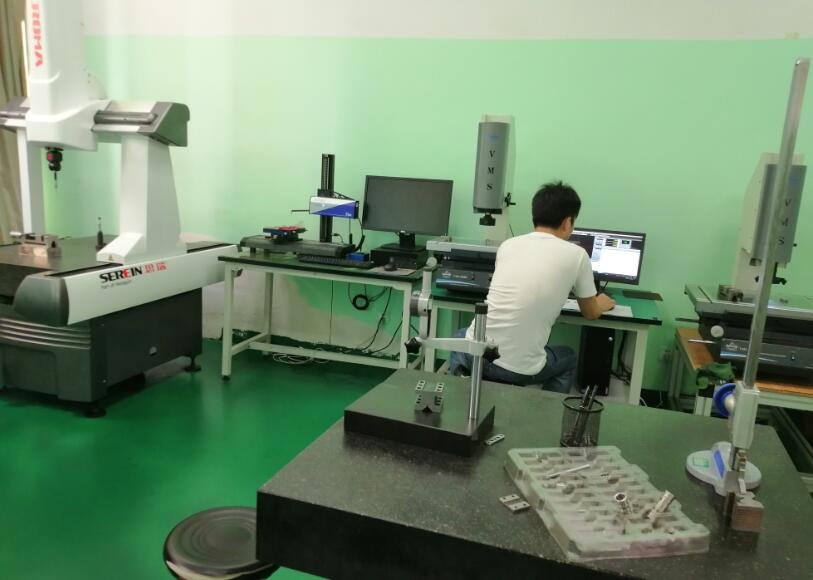
What We Do in our Daily Operation
- Full understanding of drawings and tolerances. as soon as the orders received here, the project manager should read the requirements clearly and meanwhile talking with the customers on parts functions before releasing drawings, and then inform the cnc operators the best ways to machine and what points should be paid attention.
- 2ndly, Material Quality Check. materials visual checking and sizes measuring by IQC and we can provide material certificated if requested. and material reports can be provided if a request from the customer.
- thirdly, first samples inspection and also IPQC (In-Process Quality Check) every two hours by various equipment and make reports for records.
- Finally, Outgoing Quality Control- OQC. for small batches orders,100% inspection; big quantity 20% test at random. Only the products that pass the final inspection can be packed and shipped out. One more thing,if you find any quality problems after receiving the parts, we’ll replace them free of charges to make sure you don’t bear any risk at all.

